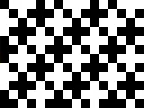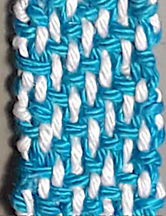Hey sorry coming to this late - have been preoccupied with writing and funding applications…
- Where do patterns come from?
I enjoyed the explanation from “Is God a Geometer” - pattern happens when a force is applied to a symmetry, so that it ‘breaks’ and a new, more complex symmetry emerges. But as a live coder I tend towards an human-centric view… A pattern is away of making, or a systematic activity that is perceived in its results… But then I recently read Lorenz’s definition of chaos: “When the present determines the future, but the approximate present does not approximately determine the future.” … that seems true of patterns as well, at least when they come from more involved algorithms… If you have some notation for a pattern and change some small part of it, that might have large, unpredictable results… But I don’t know too much about chaos theory.
- What makes a pattern interesting?
As an algorithmic musician or a weaver, I think patterns are especially interesting when I don’t understand them yet, or am in the process of understanding them. This is why I enjoy improvising music so much, and am so terrible at finishing releases. I just want to make and understand new patterns all the time. For example I recently tried weaving this simple up/down structure:

That looks like tesselated pluses.
When I tried weaving that with alernating white and blue warp (vertical) and weft (horizontal) threads though it looked like this:

That doesn’t look much like pluses, and the back looked like this:

So I think that this weird deterministic yet unpredictable relationship that throws up endless puzzles is what makes pattern interesting… That point where you by understanding and formalising something you create a whole new world of unknowns, and you realise that you don’t understand it at all…
- What are the limits of pattern perception (at which scale or how we perceive/measure them)
Well I guess at one extreme, a pseudo-random number generator is a pattern, e.g.:
a = 16807;
m = 2147483647;
seed = (a * seed) mod m;
random = seed / m;
Fairly simple (e.g. low komolgorov complexity) but designed to create a pattern beyond our perception.
At the other end of the spectrum I guess there’s a uniform surface, which is symmetrical in every direction but also totally mundane and not perceivable as pattern…

